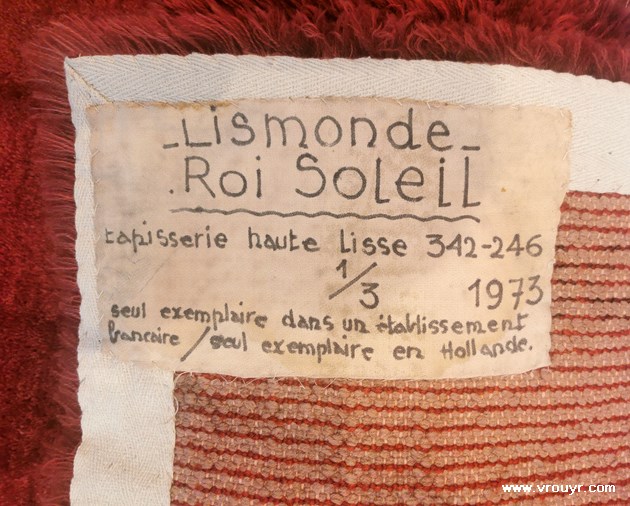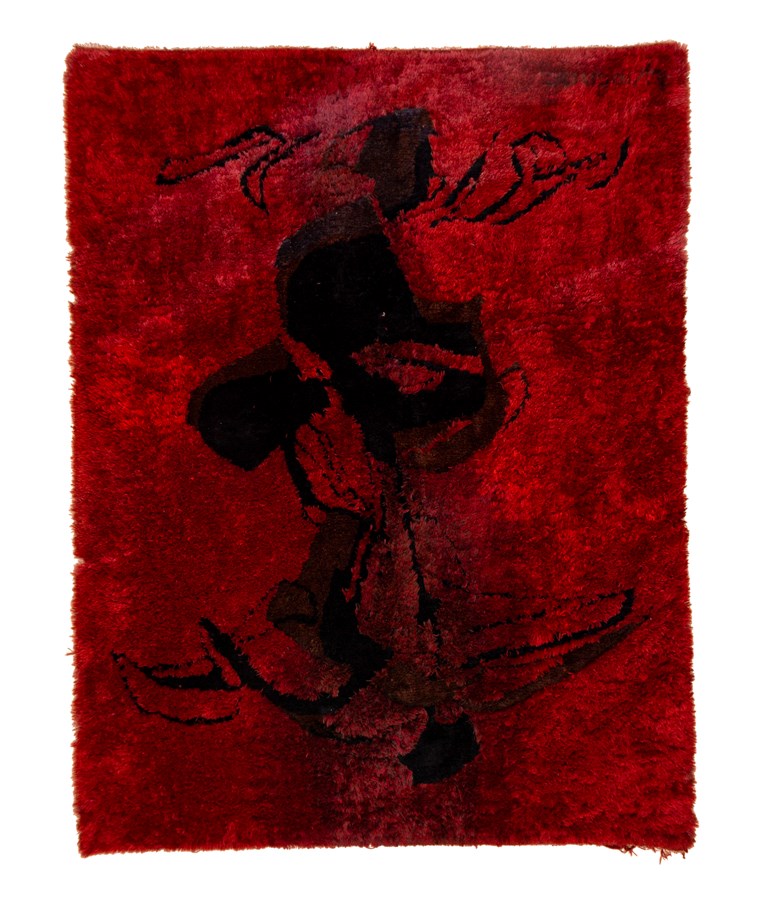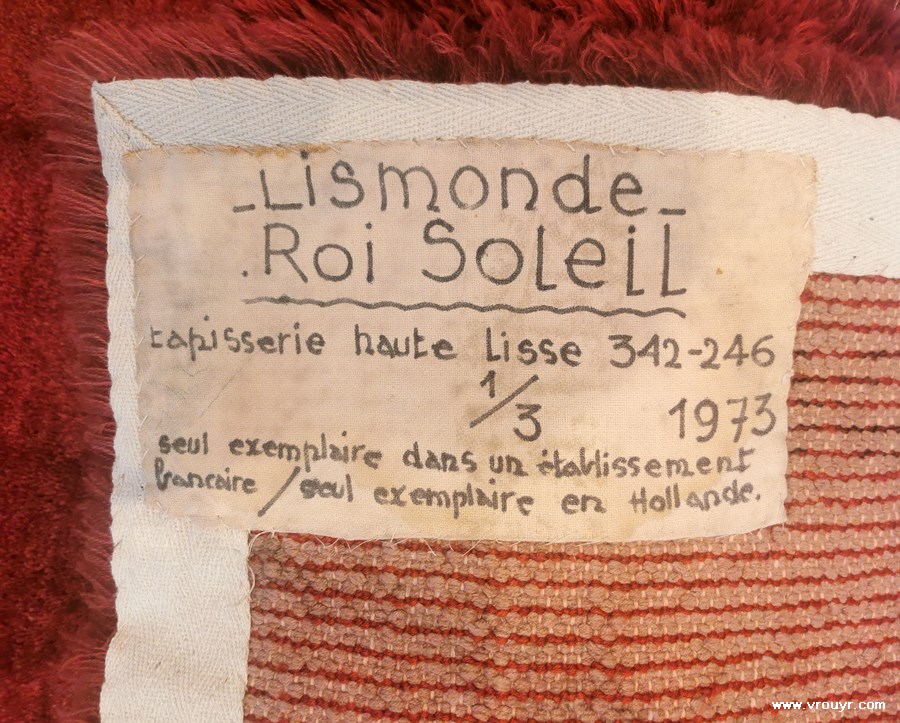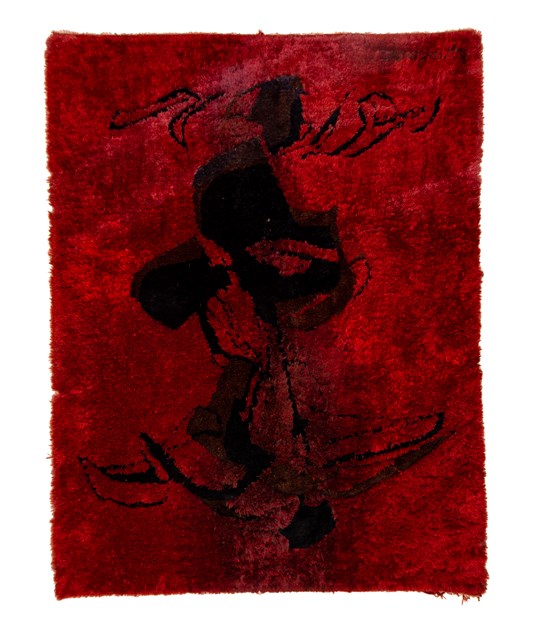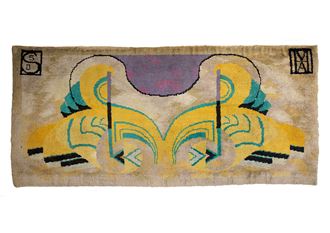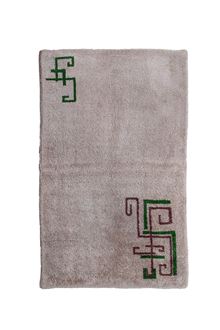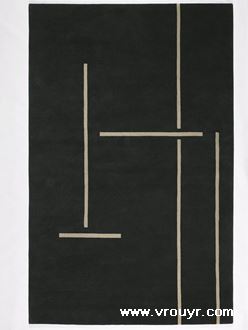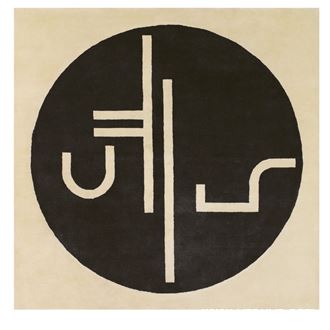Roi Soleil 1/3 by Jules Lismonde
ref: 38753
246 x 342 cm
8' 0⁷/₈" x 11' 2⁵/₈"
warp and weft: cellulose
pile: wool
Europe
1973
Coulours may appear different on the website than in reality. All mentioned prices and sizes are indicative and not binding. Possibly some rugs that are still online, are not available anymore in the showroom.
This tapestry was designed in 1973 by Jules Lismonde. In his notes he refers to it as TPP or PP, i.e. Tapestry for the Banque de Paris et des Pays-Bas, as the work was commissioned by BNP Paribas Amsterdam. The sketch of the rug is no 2876. The original (the large format which will be presented at Brafa 2024) was made by the Destombes carpet workshop in Courtrai and was followed by two smaller format copies. They date from 1974 and 1975.
In an article entitled "Vibrations Spatiales" published in "Art et Culture" in April 1992, painter and art critic Jo Dustin commented on the artist's work as follows: "It was in sketching tapestries that Lismonde returned to the chromatic flavour from 1962 onwards. The very matrix of these preliminary drawings is a result of the signs he decants. The 1973 Le Roi Soleil is a dark, bursting bloom that activates multiple reds, carmines and warm mauves. And the wool here sings like a wonderfully shifting wild coat.”
Literature: Lismonde et la tapisserie; Maison Lismonde

Jules Lismonde
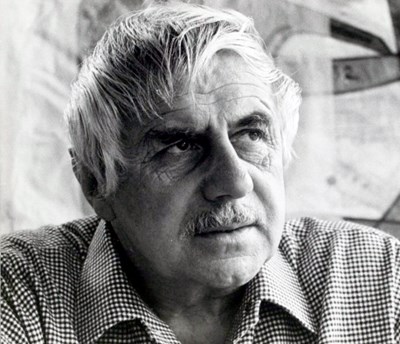
YOU MAY ALSO LIKE

 Visit Vrouyr2
Visit Vrouyr2



 favourites
favourites

